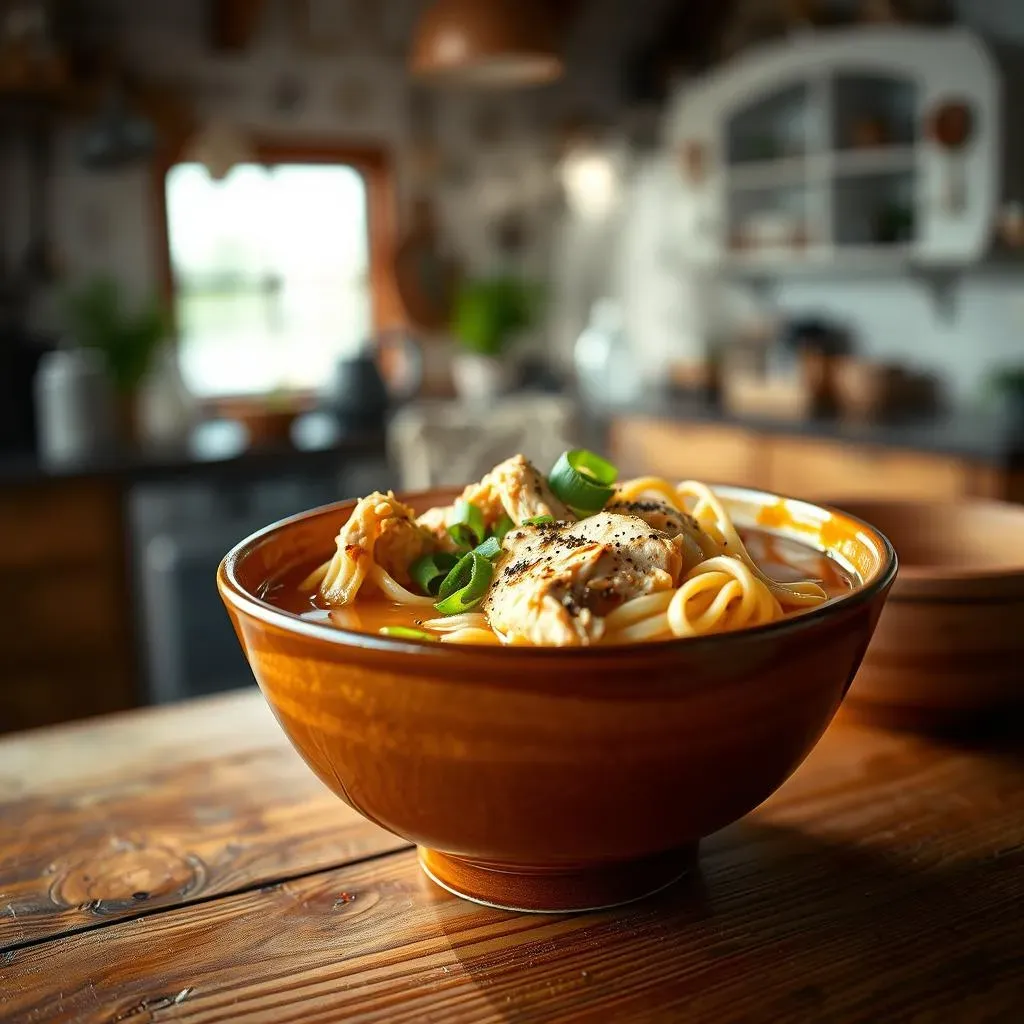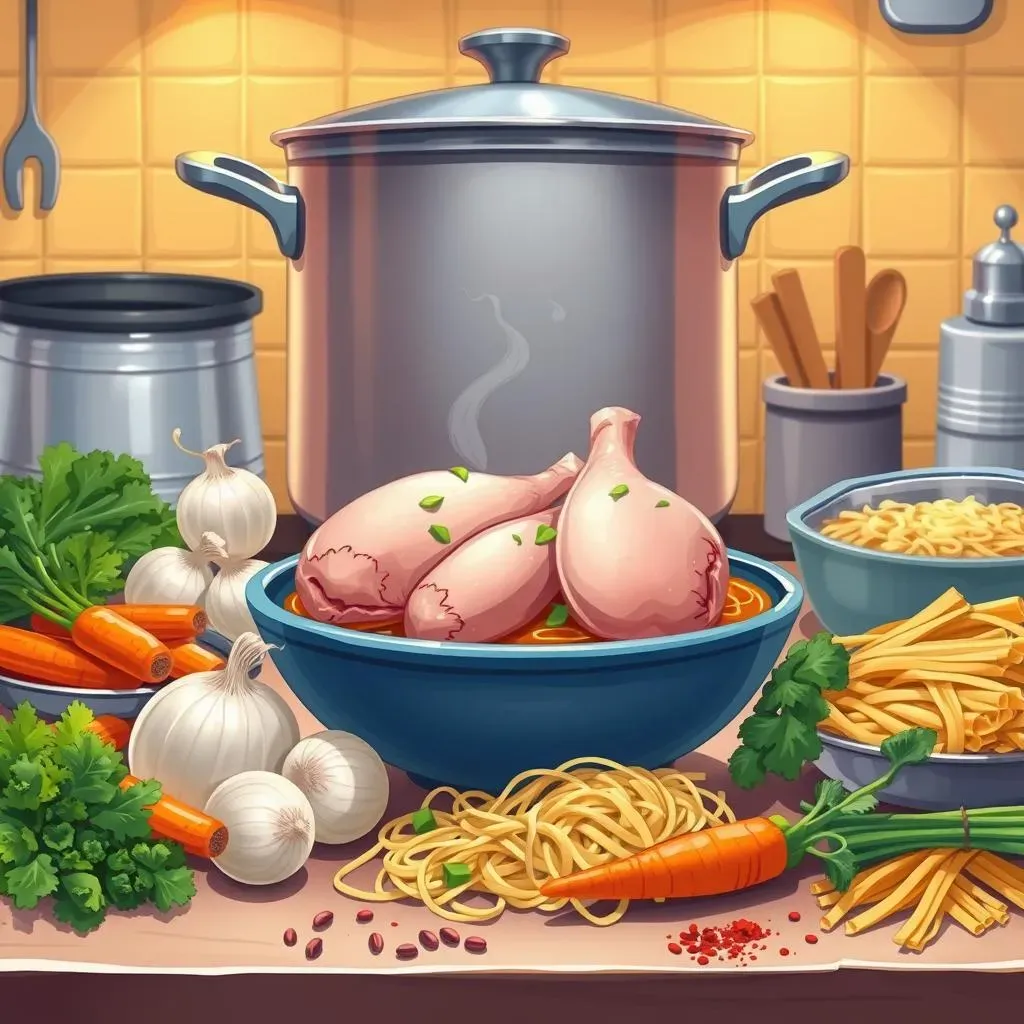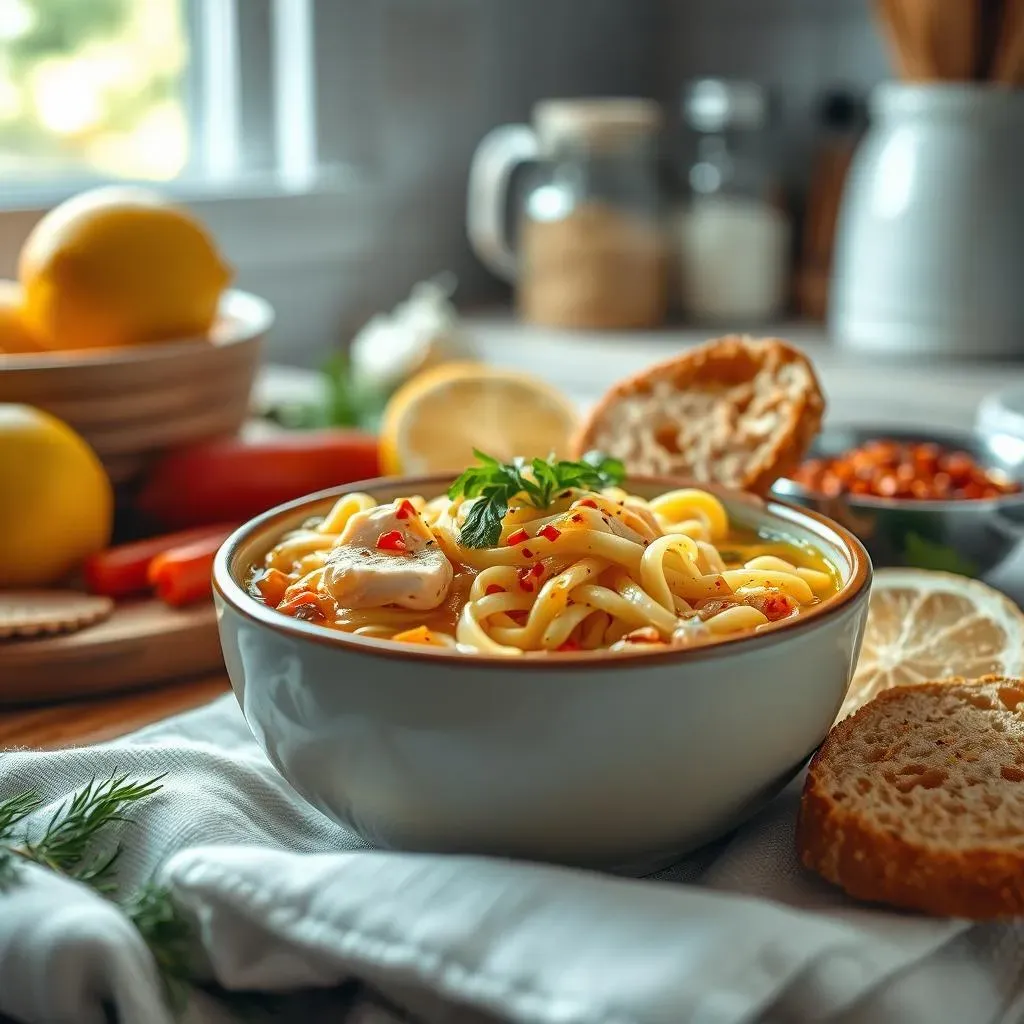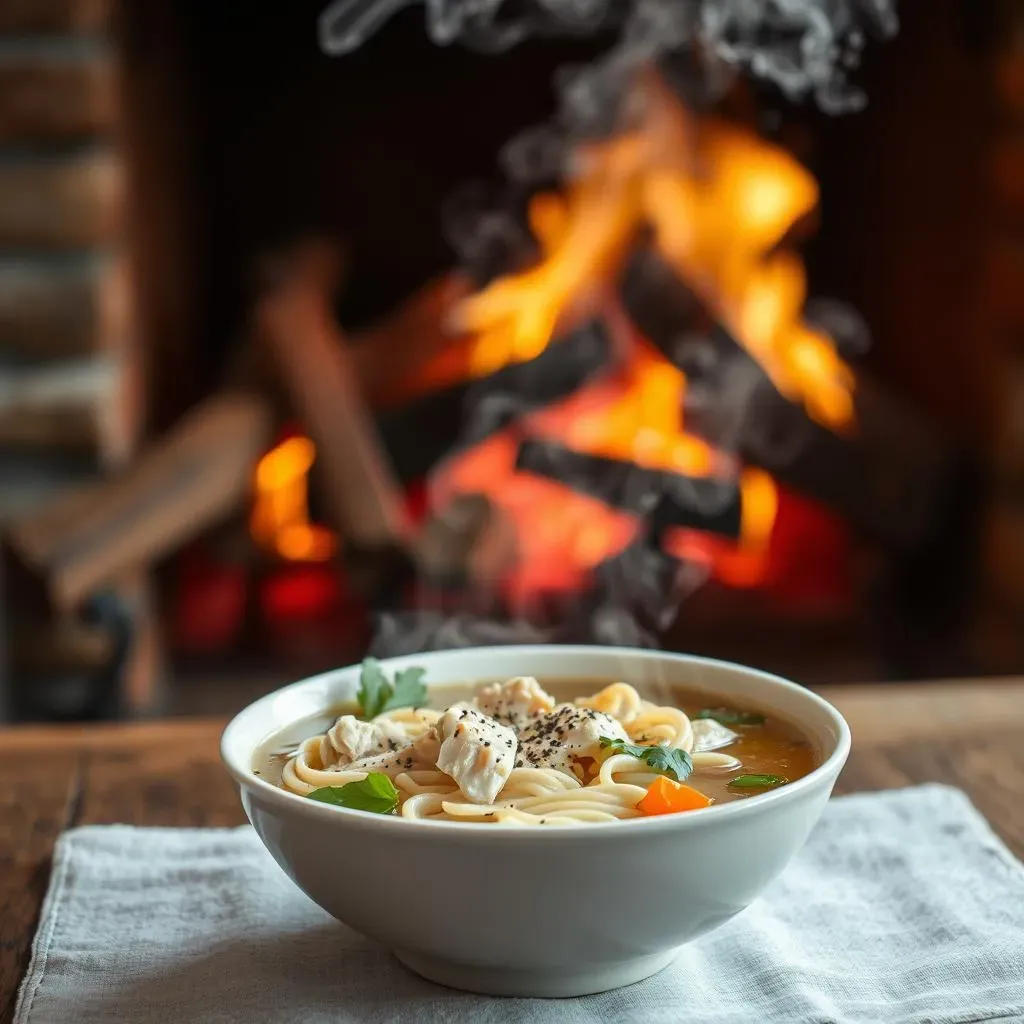Table of Contents
There's nothing quite like a steaming bowl of homemade chicken noodle soup on a chilly evening. It's the ultimate comfort food, a warm hug in a bowl. But what if I told you we could elevate this classic dish to a whole new level of deliciousness and nutrition? This article is your guide to making the *best* homemade chicken noodle soup with bone broth – a recipe that's not only incredibly flavorful but also packed with nutrients that will nourish your body from the inside out. We'll explore the magic of bone broth, why it's the secret ingredient to an exceptional soup, and walk you through a simple, step-by-step recipe that even a beginner can master. Get ready to discover the secrets to creating a truly unforgettable homemade chicken noodle soup with bone broth – a recipe that's sure to become a family favorite. We'll also explore some delicious variations, so you can personalize your soup to perfection. Let's get cooking!
The Magic of Bone Broth: Why It's the Secret Ingredient

The Magic of Bone Broth: Why It's the Secret Ingredient
A Deeper Flavor Profile
So, you're curious about bone broth? That's fantastic! It's not just a trendy ingredient; it's a game-changer for soups. Think of it like this: regular chicken broth is like a simple melody – pleasant, but maybe a little plain. Bone broth, on the other hand, is a full-blown symphony orchestra! It’s richer, deeper, and more complex in flavor, thanks to the collagen and other goodies simmering out of those bones. This depth of flavor elevates your chicken noodle soup from "good" to "unforgettable." It's the secret weapon that makes your soup sing. Want a simple recipe to get started? Check out our easy homemade chicken noodle soup recipe for a taste of how bone broth can make a difference.
The collagen in bone broth also adds a luxurious mouthfeel. It gives your soup that satisfying richness and body that you crave, leaving you feeling completely satisfied. It's not just about taste; it's about the *experience*. A truly comforting bowl of soup should feel as good as it tastes, and bone broth helps achieve that.
Broth Type | Flavor Profile | Texture |
|---|---|---|
Regular Chicken Broth | Light, savory | Thin, watery |
Bone Broth | Rich, deep, complex | Full-bodied, slightly gelatinous |
Nutritional Powerhouse
Beyond the amazing flavor, bone broth is a nutritional powerhouse. It's packed with collagen, which is great for your skin, hair, and joints. It also contains minerals like calcium, magnesium, and phosphorus, all essential for a healthy body. Think of it as a delicious way to sneak in extra nutrients with every spoonful. For a healthier twist, check out our healthy homemade chicken noodle soup recipe.
Many people find that bone broth aids digestion and soothes their gut. It's naturally low in carbs and high in protein, making it a great option for those watching their weight or following certain diets. You're not just enjoying a tasty meal; you're nourishing your body from the inside out. And the best part? It’s so easy to incorporate into your favorite recipes, like this chicken noodle soup!
- High in collagen
- Rich in minerals (calcium, magnesium, phosphorus)
- May aid digestion
- Low in carbs, high in protein
Gathering Your Ingredients: A Checklist for Success

Gathering Your Ingredients: A Checklist for Success
The Protein Powerhouse: Choosing Your Chicken
First things first: the chicken! For the richest, most flavorful bone broth, you'll want to start with bone-in, skin-on chicken pieces. Chicken thighs are a fantastic choice because they're incredibly flavorful and render a lot of fat, which adds depth to your broth. Avoid boneless, skinless breasts; they’ll leave you with a thinner, less flavorful soup. Think of it like this: the bones and skin are the secret ingredients that unlock the full potential of your soup. For a quick start, you can use a rotisserie chicken; check out our rotisserie chicken soup recipe for inspiration.
While we're on the topic of chicken, let's talk about quantity. A good rule of thumb is to use about 2-3 pounds of bone-in, skin-on chicken pieces for a large pot of soup. This will ensure you have plenty of meat for your soup and enough bones to create a rich, flavorful broth. Don't be shy with the chicken! Remember, the more bones, the better the broth. You can always freeze leftover cooked chicken for later use.
- Bone-in, skin-on chicken thighs (preferred)
- Whole chicken (for maximum broth)
- Rotisserie chicken (for convenience)
The Broth Builders: Vegetables and Aromatics
Now, let's talk about the supporting cast – the vegetables and aromatics that will add depth and complexity to your bone broth. A classic combination includes onions, carrots, and celery, often called the "mirepoix." These vegetables not only add flavor but also contribute to the overall richness of your soup. Feel free to experiment with other vegetables like leeks, parsnips, or even mushrooms for a unique twist. For a more in-depth look at vegetable options, see our recipe with vegetables.
Don't forget about the aromatics! Garlic, ginger, and herbs like bay leaves, thyme, and parsley add layers of flavor that will make your soup sing. These aromatics are your secret weapons for creating a truly unforgettable broth. Experiment with different combinations to find your perfect blend of flavors. A little goes a long way, so start with small amounts and adjust to your taste.
Ingredient | Role |
|---|---|
Onions | Sweetness and depth |
Carrots | Sweetness and color |
Celery | Savory notes and texture |
Garlic | Pungent aroma and flavor |
The Noodle Necessities: Choosing the Right Pasta
Finally, let's talk about the noodles! Egg noodles are a classic choice for chicken noodle soup, but feel free to get creative. You can use other types of pasta, such as thin spaghetti, or even try something different like rice noodles or zucchini noodles for a gluten-free option. For gluten-free options, check out our gluten-free recipe.
Consider the cooking time of your chosen noodles. Some noodles cook faster than others, so make sure to check the package instructions to avoid overcooking or undercooking them. You want your noodles to be perfectly cooked – tender but not mushy. Adding the noodles at the right time is key to achieving the perfect texture and preventing them from becoming soggy.
StepbyStep Guide: Crafting Your Perfect Bowl

StepbyStep Guide: Crafting Your Perfect Bowl
Building the Broth: A Foundation of Flavor
Alright, let's get cooking! First, we're building the foundation – that incredible bone broth. In a large pot or Dutch oven, combine your bone-in, skin-on chicken pieces with about 8 cups of cold water. Add your mirepoix (onions, carrots, celery), aromatics (garlic, ginger, herbs), and a generous pinch of salt. Bring this mixture to a gentle simmer over medium heat. Don't let it boil too vigorously; we want a gentle simmer to extract all the goodness from the bones.
Once simmering, reduce the heat to low, cover the pot, and let it simmer gently for at least 2-3 hours, or even longer for a richer broth. The longer it simmers, the more flavorful your broth will become. Skim off any foam or impurities that rise to the surface during the simmering process. For a deeper dive into broth making, check out our how-to guide.
- Use a large pot or Dutch oven
- Simmer gently, not boil
- Skim off impurities
- Simmer for at least 2-3 hours
From Broth to Bowl: Assembling Your Soup
After your broth has simmered beautifully, remove the chicken from the pot and let it cool slightly. Once cool enough to handle, shred the chicken meat from the bones, discarding the bones and skin. Strain the broth through a fine-mesh sieve or cheesecloth to remove any remaining solids. Return the strained broth to the pot.
Bring the broth back to a gentle simmer. Add your noodles and cook according to package directions. Once the noodles are cooked, stir in the shredded chicken. Season with salt and pepper to taste. Add any extra herbs or spices you desire. And there you have it – a perfectly crafted bowl of homemade chicken noodle soup with bone broth! For a step-by-step guide, check out our step-by-step recipe.
Step | Action |
|---|---|
1 | Shred chicken |
2 | Strain broth |
3 | Simmer broth |
4 | Add noodles |
5 | Add chicken |
6 | Season to taste |
Beyond the Basics: Delicious Variations and Tweaks

Beyond the Basics: Delicious Variations and Tweaks
Spice It Up!
Let's get creative! Once you've mastered the basic recipe, the world of flavor combinations is your oyster. Want a little kick? Add a pinch of red pepper flakes for a touch of heat. Or, for a zesty twist, try a squeeze of lemon juice at the end. For something completely different, explore our recipe with fresh herbs for some exciting new flavor profiles.
Think about adding some curry powder for a warming, exotic flavor. Or, for a Mexican-inspired twist, consider adding some cumin, chili powder, and a touch of lime juice. The possibilities are endless! Don't be afraid to experiment and discover your own unique flavor combinations. Remember, cooking should be fun, so let your taste buds be your guide.
- Red pepper flakes (for heat)
- Lemon juice (for zest)
- Curry powder (for warmth)
- Mexican spices (for a twist)
Ingredient Swaps and Substitutions
Feeling adventurous? Let's talk ingredient swaps! Not a fan of carrots? Substitute parsnips or sweet potatoes for a different sweetness and texture. Don't have celery on hand? Leeks or fennel can work wonders. For a low-sodium option, check out our low-sodium recipe.
Want to make it a complete meal? Add some cooked chicken sausage or shredded rotisserie chicken. For a heartier soup, consider adding some lentils or beans. For a different noodle experience, try different types of pasta, such as rice noodles or even zucchini noodles. Remember, this recipe is a canvas for your creativity; feel free to personalize it to your liking!
Original Ingredient | Possible Substitutions |
|---|---|
Carrots | Parsnips, sweet potatoes |
Celery | Leeks, fennel |
Egg Noodles | Rice noodles, zucchini noodles |
